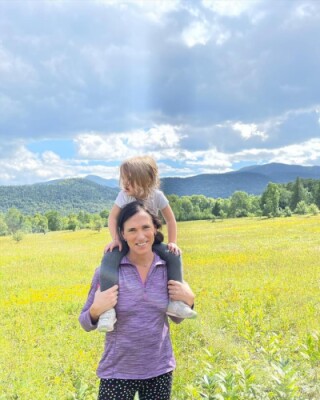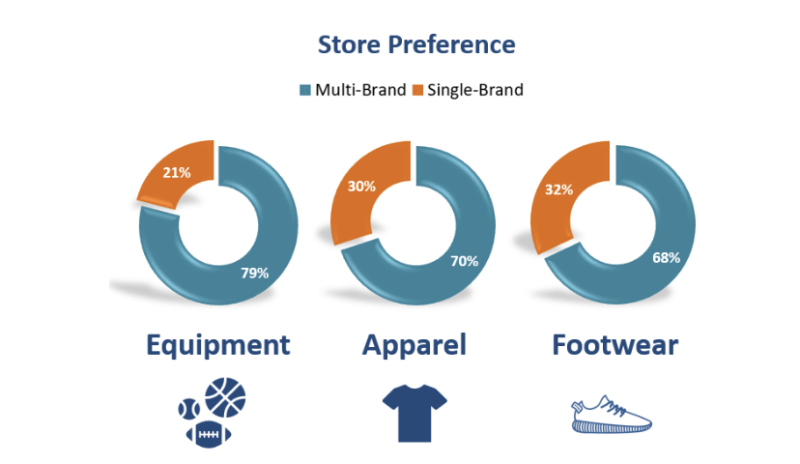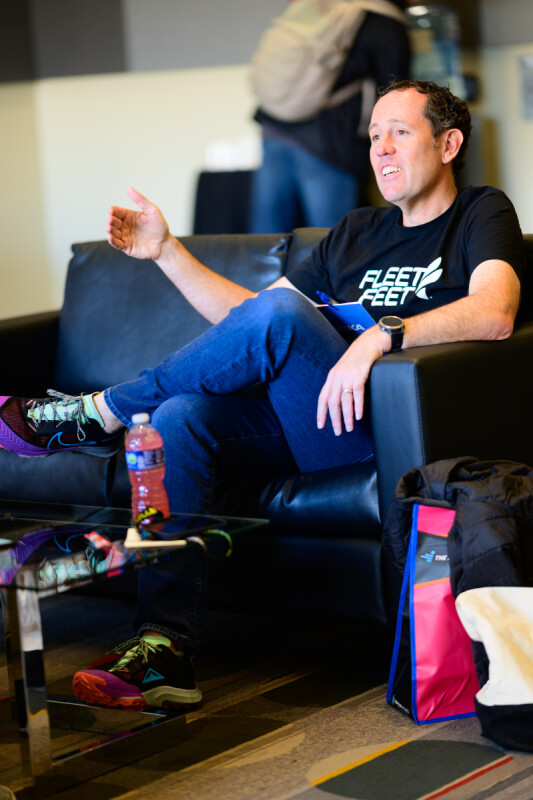I was about seven when I had my first solo mountain adventure. With a bear bell on my belt and both fear and joy coursing simultaneously through me, I was running far ahead of my parents on a wilderness trail in Glacier National Park. Childhood was different in the 1960s and ’70s and my parents did little to discourage my independence. I’m grateful for it because that day I took my first steps on a journey that has not only been my life, but also changed my life.
I absolutely love who I am, where I am and what I do. Though my life’s path to this idyllic existence is a complex story, it all hinged, in retrospect, on one singular part of who I am. One that goes way back to that first solo mountain adventure — trail running.
We are all different people, so naturally our experiences as trail runners are all different. My unique life experiences, including my father’s guidance, my love of the Earth and my journey as a transgender woman, all shaped my development and as a trail runner. Now, after 45 years of running, including thousands of miles on seriously technical trails deep into the wilderness, it is a part of me. Part of my soul. And this is my story.
The Story of a Trail Runner
Born and raised in rural Wisconsin, I grew up pretending as best I could to be the boy everyone believed me to be. Today, I am my true self, an athletic mountain woman living and thriving in the six-million-acre Adirondack Park of upstate New York, a forest preserve greater in size than Yellowstone, Everglades, Glacier and Grand Canyon National Parks combined. When I’m not running or skiing or doing something equally as joyful with my wife and grandchildren, my job at the New York State Olympic Regional Development Authority has me telling the inspiring stories of athletes at all levels and the world class recreation that abounds in the Olympic Village of Lake Placid — one of just three places on Earth to have hosted the Winter Games twice.
I first began to see myself as a runner in the summer of 1978, when before entering high school I decided to join the cross-country team. Back then I didn’t think much about the sport or what I was doing. I just wanted to be part of the team. I didn’t stick with the team beyond that first year, but I did stick with running.
I had plenty of friends, but that team environment was difficult because all through my young life I felt different. Vivid recollections of wanting to see a girl in my mirror – as true as they were to me personally – quietly undermined my social life. The boy reflected back at me didn’t fit my internal perception of who I was. I had no understanding why I felt this, no words with which to even think about it, and no one I could talk to. Day after day, week after week, year after year everything around me from parents to school to media taught who I was supposed to be and what I learned was to hide and pretend. To survive by pushing down my shame and creating a version of me the world expected.
Thankfully, I was also spending time in nature and connecting deeply with it. My father nurtured that in me. He was a professor of geology and geography, so family vacations in the Rockies were a regular thing. He would abruptly stop our yellow station wagon and we’d all climb out to hear a lecture on the local rocks and landscape. Those times traveling across the western states were magical for me.
Mountains and forests felt like places I belonged. As often as I could I sought solitude in the forest and immersion in nature. It was healing and helped me survive. As a teen I came to feel the relative ease and comfort the outdoors afforded me. Naturally, I combined my growing devotion to running with my need for nature.
In my 20s, I spent a couple years living in giant cities in Asia and Europe trying to find myself. As my passion for running grew, I was also gaining experience as a leader and a marketing and communications expert and my confidence was growing. I was also training seriously and trail running often.
Always though, I yearned for a life in the mountains and it wasn’t long before I latched onto the idea of buying a business in a mountain town, an idea that quickly became a goal. I wanted to share the joy and freedom I felt there with my wonderful wife and I yearned for my children to grow up with that beauty in their backyard.
Running a Business
After pursuing a few possibilities in Colorado, I came across an ad for a small European style inn and restaurant for sale in Lake Placid, NY. Knowing nothing else about it but what I saw as a 16-year-old kid watching the 1980 Winter Olympics, my mind was flooded with memories of my Wisconsin hockey heroes and speed-skater Eric Heiden smashing limitations and performing miracles. Pushing my own perceived limitations aside, I was soon driving into the Adirondacks for the first time. A few months later, we were moving across country.
That first summer I worked hard on our new business and also ran regularly into the mountains. There I began discovering the beauty of the Boreal Forest and the Adirondack High Peaks region.
Though a lot of my training and trail running was always and remains always a solo endeavor, I met new friends with whom I eventually racked up tens of thousands of miles trail running, cross-country skiing, cycling and swimming. Having witnessed the local Iron distance triathlon, I caught that bug, too, and although trail running remains my summertime focus, doing that 140-mile race further erased mental and physical limitations and inspired previously unimaginable days of mountain running.
There is something mystical, even magical about distance running on Adirondack trails. Worldly worries and even time disappear. Out there my spirit is immersed in wilderness, infused with calm and astonished by the primordial beauty around me. My endurance and agility are through-the-roof strong, even at 59-years old. At the same time, my love for the natural world brings me time and again to a complete standstill, pausing to behold the miniature treasures at my feet, which fill me with awe as much as the vastness and views.
Trail running has the power to change one’s perspective. And it can also change one’s life. One way it did for me was to infuse me with the courage and the sense of self I needed to accept my being transgender and love myself for all I am. Even in the face of a world that insists I no longer deserve the same protection, opportunity and experience in life as the next person, I found the strength within to end my decades of self-persecution.
I had been imprisoned all my life in the wrong gender and time had come to step away from the irrational fears and prejudices and finally stand tall in the face of the inevitable judgement of others. No one should ever have to hide in shame their entire lives simply for who they are.
Through that process, the harsh realities of life as a transgender woman bestowed on me a beautiful and powerful gift. An acute awareness of my many privileges in my life, some of which I lost in my transition, and one new one I’m beyond grateful for — living true to myself.
In these ways trail running for me is far more than an enjoyable outdoor fitness activity. It is personal growth. It is mental health. It is therapy and healing. It is inspiration. It is strength and confidence. It is transformation. It is creating a better future. It is love. And it is peace.
_______
Meeting the Challenge of the Trail
The author’s love of trail running combined with extensive experience in business leadership, marketing and in meeting life’s challenges affords her some unconventional thoughts on success in trail running merchandising.
1. Establish yourself or your business as genuine leaders in the trail running community and demonstrate that leadership by nurturing that community. Being a leader can mean many things: Connections, Compassion, Culture, Commitment and Communication. What you do on a daily basis will define each of these.
2. Articulate and live a set of core values to serve as a foundation for all business and personal behavior. A good place to start is considering the Olympic values of Friendship, Respect, Excellence, Equality, Determination, Inspiration, Courage and Unity. Two others I find indispensable are integrity and kindness.
3. Commit to welcoming everyone. One Gallup poll puts the percentage of the LGBTQ population in the U.S. at 13 percent. If we look just at Gen Z, it’s 21 percent. And that’s just my community; the many other types of diversity translate to many more potential customers. Besides that, it’s the right thing to do. So, take initiative to learn the language of diversity and understand the experiences and challenges of others. Put a sign on your front door that explicitly and very visibly declares you welcome everyone. Recruit diverse team members and educate them to provide service that values and respects everyone.
4. Create opportunities for trail running that provide safe, inclusive, accepting spaces for everyone. That includes not only the standard definitions of diversity, but also all levels of ability and experience. Let’s face it, this sport is intimidating for many. A welcoming, weekly casual run or training opportunity will bring new people into the sport and help them grow in it. It will also affirm your reputation in the hearts of your customers, which is vital because it’s not a brand’s tangibles that matter most, it’s how your customers and potential customers feel about you. My favorite place on Earth, Mt. Van Hoevenberg, did this recently and it is greatly elevating awareness of their trails as a place to run as well as ski.
5. The lives of marginalized groups have taken steps backward in recent years. These communities need support from real allies willing to take action. Reach out and find ways to make a difference. Words alone make no difference in the lives of real people. Want diverse people to really see you and love you? Get active in community organizations. Challenge discriminatory behavior rather than remaining silent or neutral. Stand up and be heard. Advocate for others. Creating an inclusive and respectful brand will involve some discomfort along the way, but this is part of making the world a better place and forging an authentically compassionate brand.






